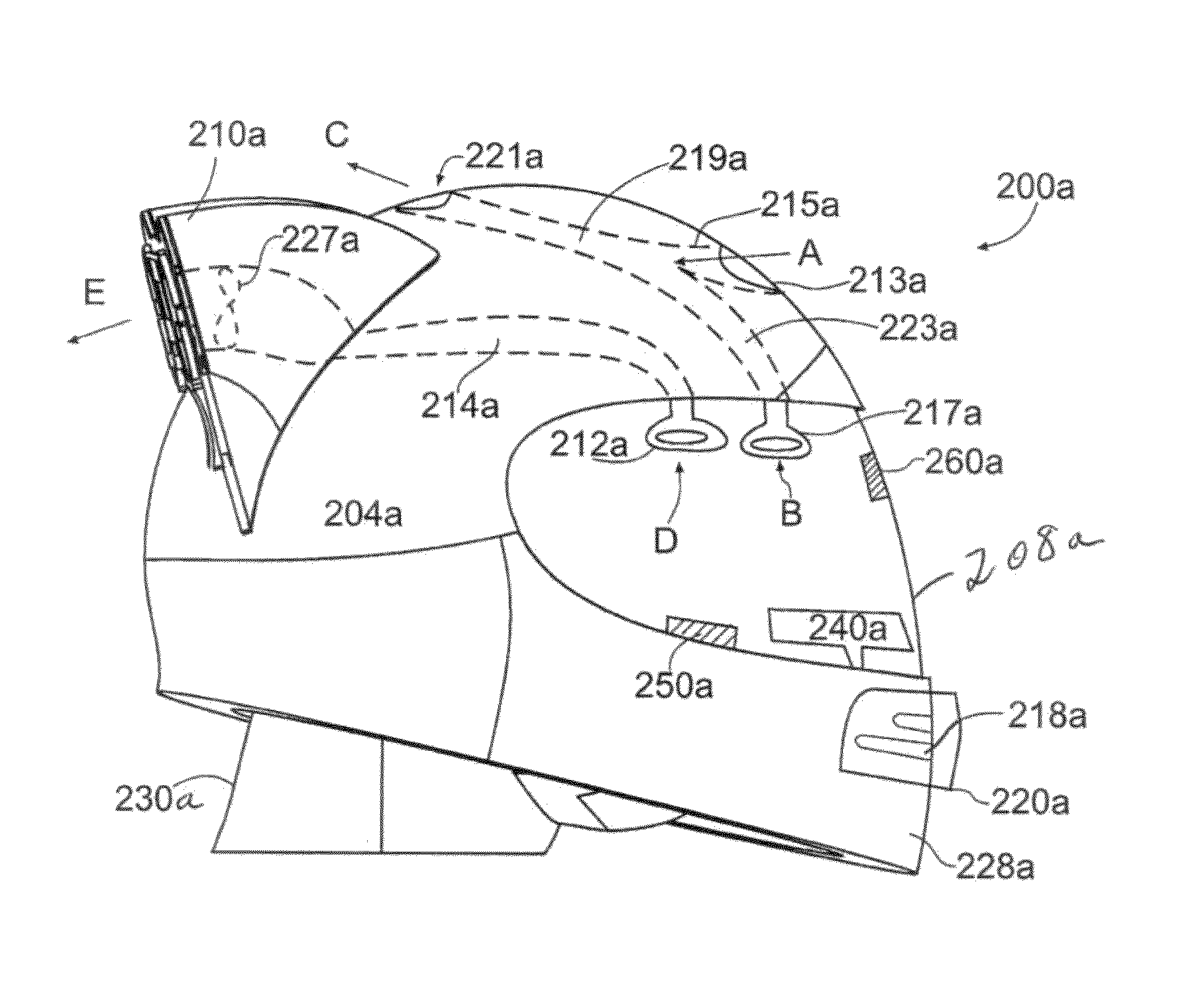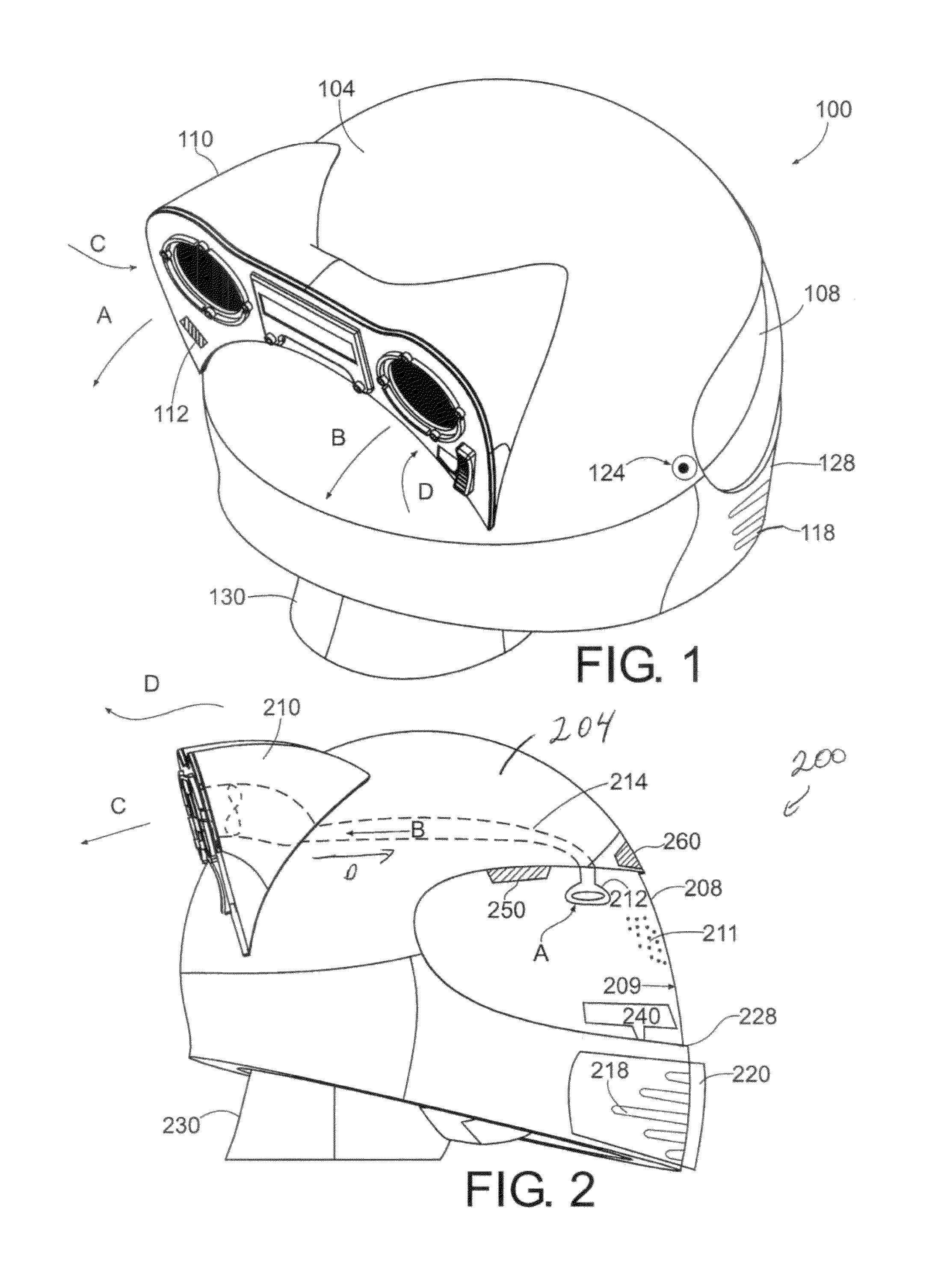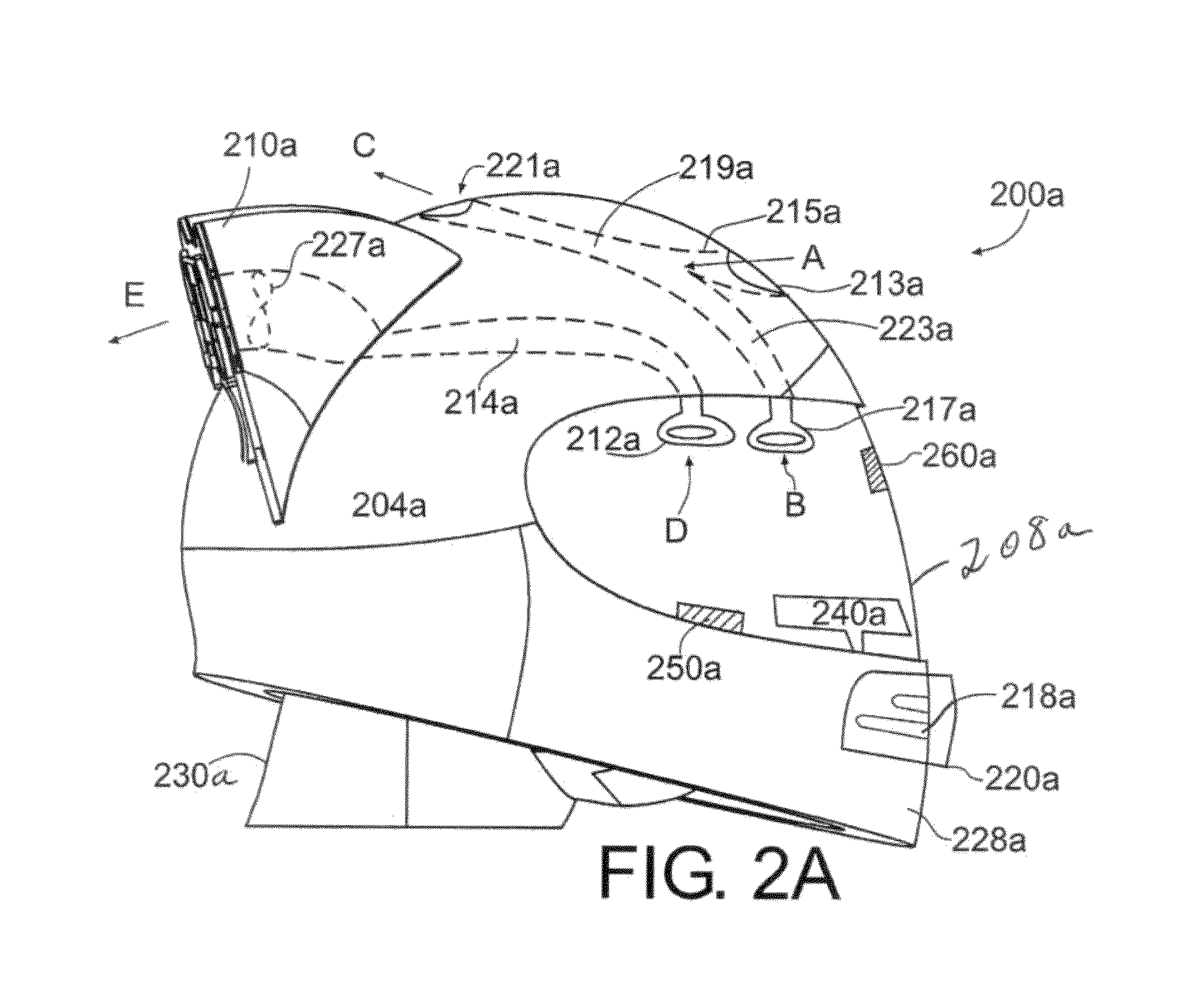Actively ventilated helmet systems and methods
a technology of active ventilation and helmets, applied in the field of protective helmets, can solve problems such as creating a claustrophobic feeling in helmet users, and achieve the effect of effectively preventing or removing condensation
- Summary
- Abstract
- Description
- Claims
- Application Information
AI Technical Summary
Benefits of technology
Problems solved by technology
Method used
Image
Examples
Embodiment Construction
[0028]The ensuing description provides exemplary embodiment(s) only, and is not intended to limit the scope, applicability or configuration of the disclosure. Rather, the ensuing description of the exemplary embodiment(s) will provide those skilled in the art with an enabling description for implementing exemplary embodiments. It being understood that various changes may be made in the function and arrangement of elements without departing from the spirit and scope as set forth in the claims.
[0029]Embodiments of the present invention encompass helmet systems and methods that provide enhanced viewing capabilities, particularly for users engaged in sports and other physical activities. In some cases, helmet systems may include a humidity sensor activated fan that when activated, vents fog producing humidity from the helmet interior out to the atmosphere. Such helmet systems can also provide impact protection on par with other helmet products currently available. In some cases, helmet ...
PUM
 Login to View More
Login to View More Abstract
Description
Claims
Application Information
 Login to View More
Login to View More - R&D
- Intellectual Property
- Life Sciences
- Materials
- Tech Scout
- Unparalleled Data Quality
- Higher Quality Content
- 60% Fewer Hallucinations
Browse by: Latest US Patents, China's latest patents, Technical Efficacy Thesaurus, Application Domain, Technology Topic, Popular Technical Reports.
© 2025 PatSnap. All rights reserved.Legal|Privacy policy|Modern Slavery Act Transparency Statement|Sitemap|About US| Contact US: help@patsnap.com



